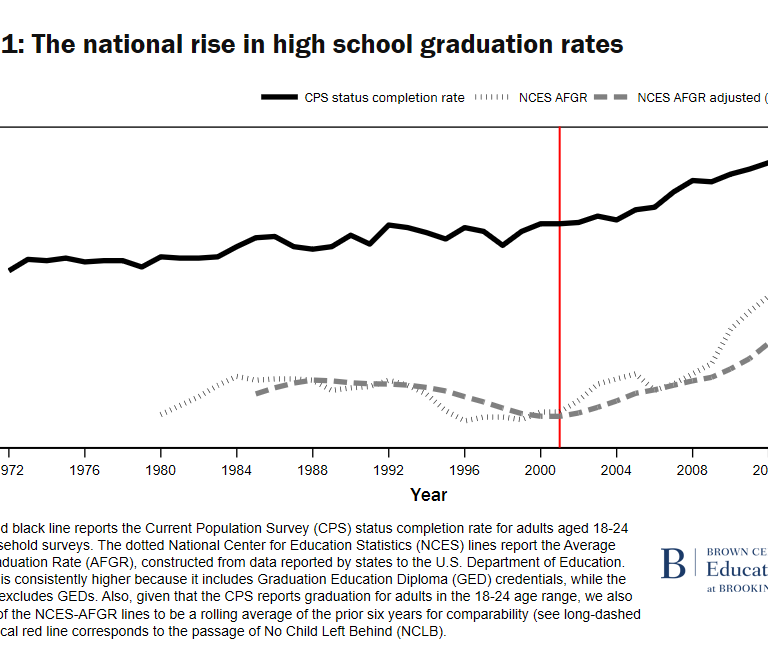In this edition of Charts of the Week, a sample of some recent research on education, mobility, and race.
Do Majority-Black Colleges Boost Social Mobility?
 Tiffany Ford and Richard Reeves compare data on social mobility (a combination of access, or the number of students from the bottom 20% of the income distribution getting into college and success: proportion of those students who rise to the top 60%) for students attending majority-Black colleges versus majority-White colleges (both of the four-year type). They find that the average mobility rate is much higher at MBCs than at MWCs for the students entering from the bottom fifth quintile of income. Ford and Reeves conclude that “if we are serious about reducing inequality and advancing mobility for Black people, a key place to intervene is at college.”
Tiffany Ford and Richard Reeves compare data on social mobility (a combination of access, or the number of students from the bottom 20% of the income distribution getting into college and success: proportion of those students who rise to the top 60%) for students attending majority-Black colleges versus majority-White colleges (both of the four-year type). They find that the average mobility rate is much higher at MBCs than at MWCs for the students entering from the bottom fifth quintile of income. Ford and Reeves conclude that “if we are serious about reducing inequality and advancing mobility for Black people, a key place to intervene is at college.”
WHAT’S FUELING THE RISE IN US HIGH SCHOOL GRADUATION RATES?

One of the most substantial achievements of the U.S. education system over the past 20 years, says Douglas Harris, has been the steep rise in the high school graduation rate. In his teams’ research, Harris shows that this increase is timed to implementation of new accountability provisions in the No Child Left Behind law in the early 2000s. But the question which that spurs is whether the increased graduate rate is a matter of schools improving the quality of education or “did they game the system” to meet the demands of NCLB? Harris and his team analyzed a number of different factors, detailed in their report, concluding that “even in the worst-case scenarios laid out here, the evidence suggests that the accountability helped increase the national high school graduation rate.”
What explains inequalities in educational outcomes between Black and white students?
 Writing for the Brown Center Chalkboard, researchers Kenneth Shores, Ha Eun Kim, and Mela Still examine gaps between Black and white students across a range of educational outcomes, such as suspensions and uptake of AP courses, and explore whether these gaps are best explained by students’ out-of-school characteristics (e.g., their home environment) or choices that schools make. “We argue,” they write, “that schools are the principal source of these disparities, and, to the extent out-of-school factors are emphasized over educator discretion, researchers will have failed to hold schools properly accountable.”
Writing for the Brown Center Chalkboard, researchers Kenneth Shores, Ha Eun Kim, and Mela Still examine gaps between Black and white students across a range of educational outcomes, such as suspensions and uptake of AP courses, and explore whether these gaps are best explained by students’ out-of-school characteristics (e.g., their home environment) or choices that schools make. “We argue,” they write, “that schools are the principal source of these disparities, and, to the extent out-of-school factors are emphasized over educator discretion, researchers will have failed to hold schools properly accountable.”

Commentary
Charts of the Week: Some issues in education
March 6, 2020